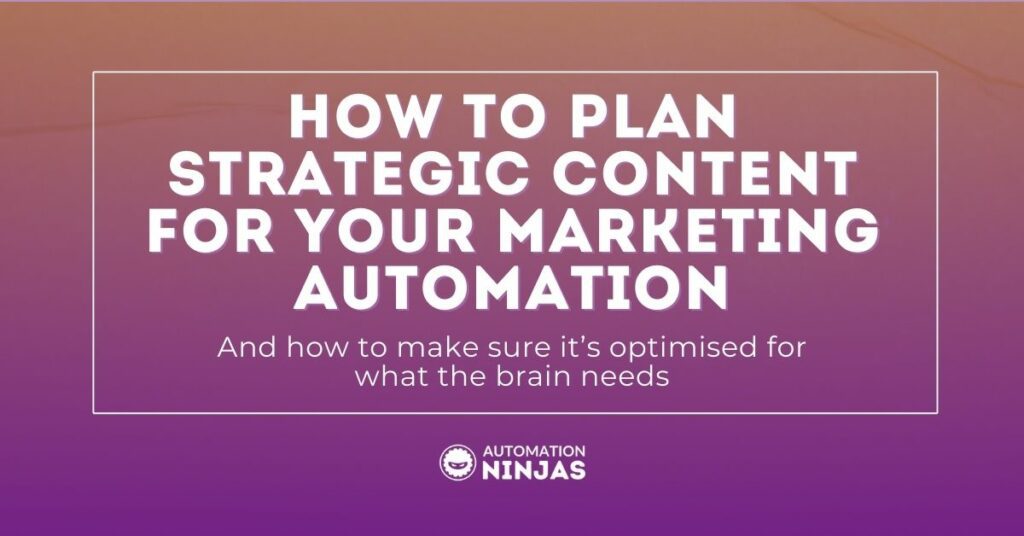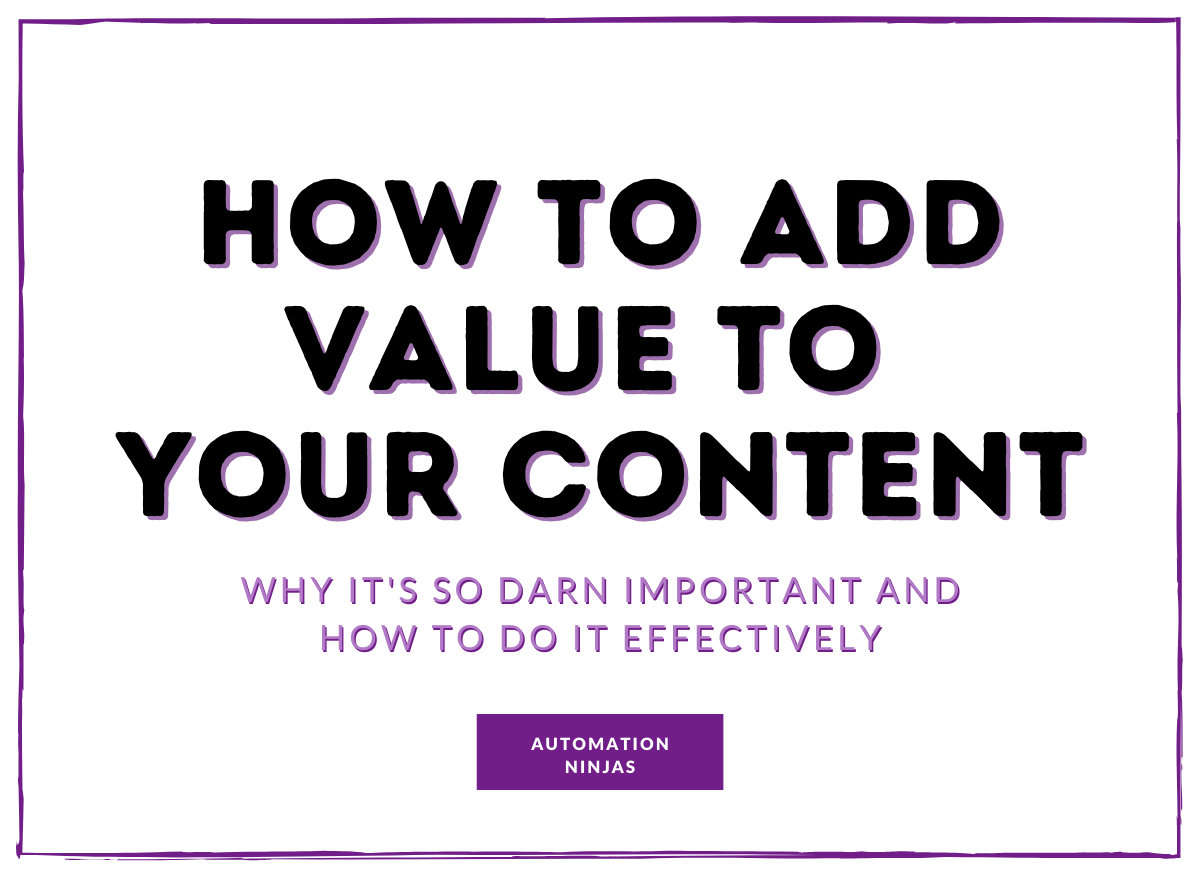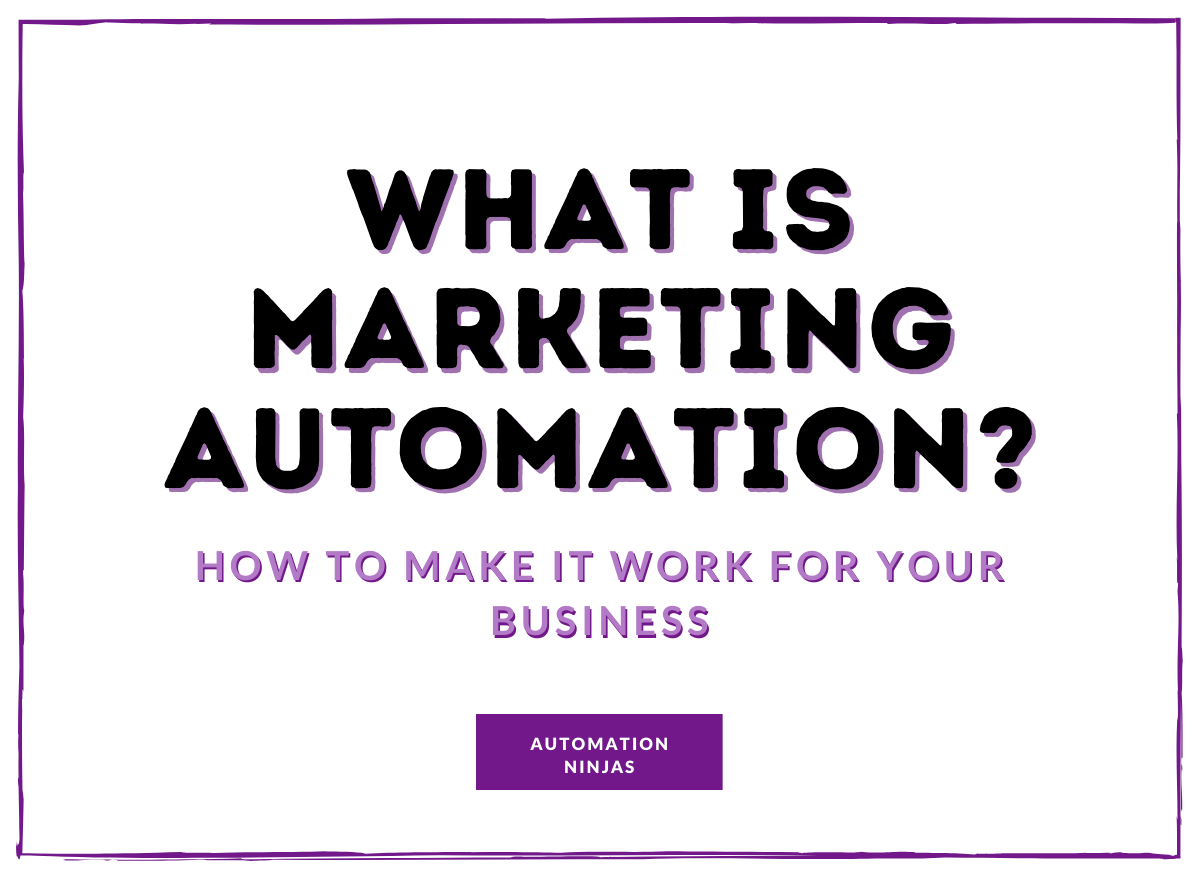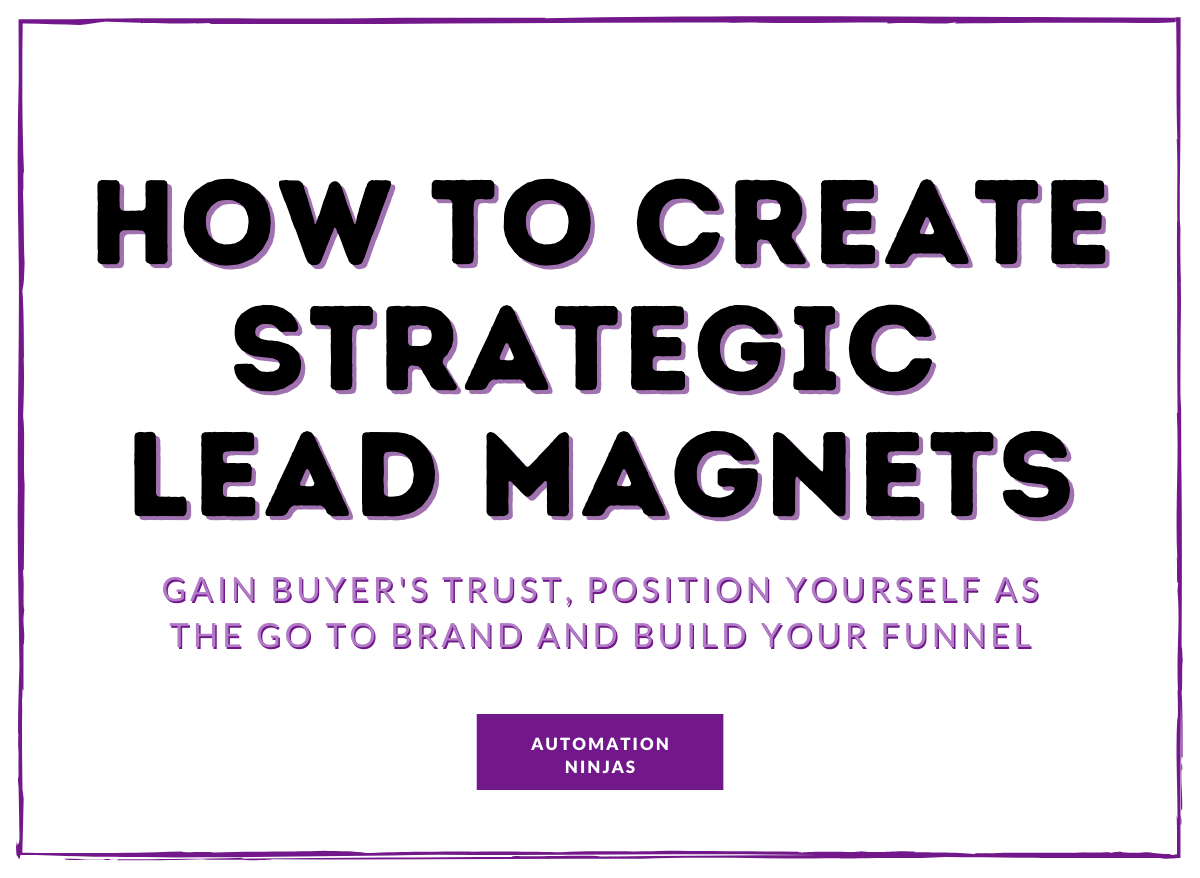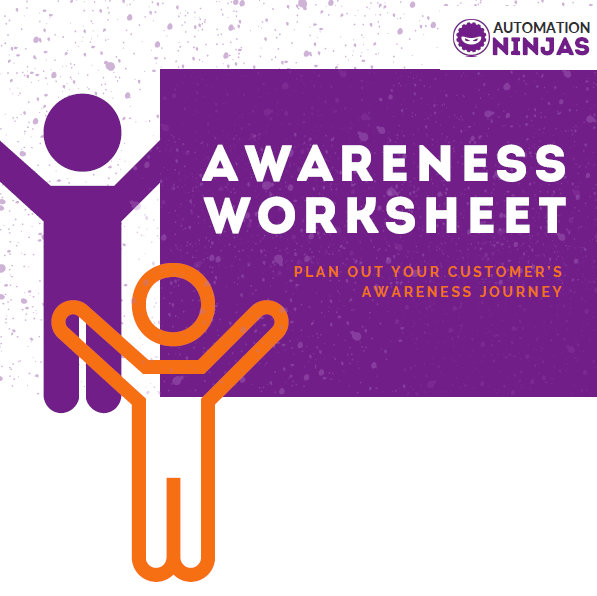AUTHOR: Kenda Macdonald
As a dedicated consultant, I specialise in elevating businesses through top-tier consultancy, fueled by a deep understanding of buyer psychology cultivated over years of experience. My expertise lies in crafting marketing and sales strategies that propel businesses to new heights by leveraging insights into the buyer brain. As a bestselling author, public speaker, and strategist, my passion for decoding human behavior drives me to innovate and deliver unparalleled results. I've designed a methodology adaptable for all types of businesses, ensuring transformative customer journeys and experiences.
Strategic content is one of those hot topics that everyone loves talking about. It’s easy to understand why - a Semrush study found that 84% of companies (across B2B, B2C and non-profits) have some kind of content strategy in place already.
Almost every marketing conference you’ll attend has a track purely for content… The internet is full of advice on content strategy too - around 1,140,000,000 results - literally a billion.
So with all of us already implementing it, and so much advice out there - why is content still so hard to actually do strategically? The very same Semrush study found that only 11% of businesses felt their content strategy was excellent.
That’s a huge disparity between those implementing and actually being happy with what they’re producing.
But worse, it’s extremely problematic for your marketing automation. Your content marketing strategy and your marketing automation go hand in hand.
Here’s the thing, content marketing and content strategy aren’t only about your blog.
The Content Marketing Institute defines content marketing as follows: “Content marketing is a strategic marketing approach focused on creating and distributing valuable, relevant, and consistent content to attract and retain a clearly defined audience — and, ultimately, to drive profitable customer action”
To attract AND retain.
After bringing traffic to your site, your content marketing efforts should be getting leads to sign up for your lead magnets. Then it should be nurturing those leads, and in converting them. And finally it should be ensuring those new customers are happy advocates that come back and purchase time and time again.
Your content strategy should be supporting your marketing automation.
Ultimately your content marketing strategy isn’t just for your top of funnel activities… It’s for the entire life cycle. And yet most businesses focus just there, right at the tippy top of the funnel.
69% of businesses focus their content strategy on top of funnel efforts (that’s over two thirds!)
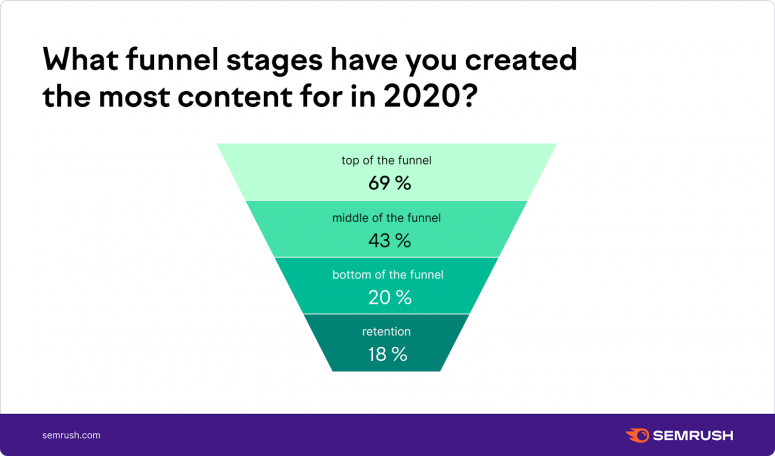
This is where strategic content comes in:
Strategic content is focused on generating better quality leads, higher conversion rates and repeat sales
Strategic content supports your marketing automation across the entire customer lifecycle.
Herein lies part of the problem.
For you to have good content strategy, you need a content plan that:
- Provides valuable content in every stage of the customer journey
- Brings in good quality leads
- Provides a sales and conversion function
- Helps with customer aftercare and retention
- Is SEO friendly to fulfil those top of funnel goals
- And of course, needs to be behaviourally adapted to keep consumers brains happy

Your content strategy has so much heavy lifting to do. It’s easy to see why businesses struggle.
There is good news though! If you approach your content strategy brain first it simplifies the entire process.
What the brain needs from your content strategy
To get clear on what you should be planning into your content strategy to make it behavioural, we need to start with the purchase itself.
In a fantastic piece of research done by Professor Brian Knutson and his colleagues at Stanford University, we now know that the brain goes through some very specific stages before it decides whether or not to purchase.
Knutson et al used an FMRI scanner to image the brain while it was making a purchase decision. First they showed participants the product, then they showed them the price of the product - and then asked them if they would buy the product.
The results of the experiment blew us all away.
When participants saw a product, the reward centres of the brain fired. This makes sense as when you see something you want your brain emulates having it, and gives you a reward response if it feels like this might increase your chances of survival (both physically or socially). No major surprises there!
But when participants saw the price of the product… That really threw the cat amongst the pigeons.
We expected to see some prefrontal cortex action, the areas responsible for dealing with logic, decision making, and problem solving. We expected to see a little bit of emotional activation.
None of these things happen.
Instead when the brain saw price, the pain centres activated. Literally the areas of the brain that deal with physical and emotional trauma.
It’s a good reminder that the brain was not designed for “modern” usage. It evolved to survive and get us to the next day. To get by in the modern times, it hacks itself. And so we understand the impact of price through pain.
But it gets cooler than that! While going through the data, Knutson and his colleagues realised they could accurately determine whether or not the participants would purchase the product - before they had decided!
It all comes down to the levels of activation that the brain has when seeing the product vs seeing the price. If the reward activation was high, and the pain activation was low… Participants were highly likely to buy. But if the pain activation was too high and the reward activation wasn’t high enough… participants wouldn’t buy.
This is the purchase formula.
Net Value = Reward - Pain
The net value is the likelihood of your product being purchased. It must be positive and it must be high.
Content is your way to influence the purchase decision
We don’t have much control over how the brain perceives pain. We can lower it some, but we have something far more powerful at our disposal:
Reward activation.
You have huge amounts of control over how much reward activation happens when a consumer sees your product. The strength of your relationship, your positioning and your authority all build into your reward activation.
This is why content marketing works so very well. Good content strategy helps you increase the amount of reward activation the brain gets when your consumers see your products or services.
The key to using this to your advantage is to be an amazing resource for your consumer. Adding value and positioning through education is a phenomenal way to increase reward activation.
But how precisely do you do that?
Using strategic content to make consumers brains happy
Your big opportunity to increase that reward activation is to add value. And here is your next problem!
Value is variable depending on where your consumer is in their journey. Remember I promised I’d make it simpler? This is where it all comes together.
A consumer that has just realised they have an issue and is trying to understand their problem is very different from a consumer that knows what they want to buy and just wants pricing. And what is valuable to each of them in those moments is very different.
In the content and sales world this is often referred to as Top of Funnel, Middle of Funnel and Bottom of Funnel. But we need to go deeper than that.
To provide value, you must be clear on the awareness stage your consumer is in. Every consumer goes through 5 distinct phases. Each phase has different information that is valuable in that point in time. Nail these phases and you’ll be providing value.
Awareness stages for your strategic content backbone
Originally created by Eugene Schwartz, these stages (now adapted) fit the buying process perfectly.
The fabulous thing about them is that understanding where your consumer is at each point means you can provide the exact valuable information they need at that moment in time.
Awareness is the backbone of your content strategy and your marketing automation
The stages are as follows:
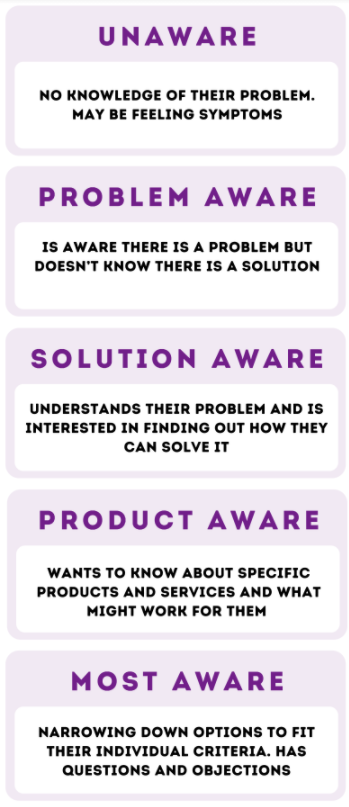
Unaware
Every consumer starts off unaware - no idea they have a problem, or that there is any issue at all. They may however be feeling some symptoms of a problem.
Using marketing automation as an example, you might be frustrated with how much time it takes to generate and nurture leads, and when you focus on fulfilment your lead generation process stops. You could feel like you’re in a feast or famine situation and have no control of the process. These are symptoms of the problem.
Problem aware
Suddenly there is a catalyst and they become problem aware. This may be as simple as something going wrong or having a conversation with someone and realising that their issue is something very specific. It could be attending a talk or a webinar and getting clarity, or it may be something that has developed over time. Whatever the reason your consumer becomes clear they have an issue on their hands. They are clear they have an issue, and they want to understand it. This is a point of research. Google calls this the Zero Moment of Truth - the point at which we turn to the internet for understanding.
Continuing our example, you see a talk/ attend a webinar/ read a blog about this frustration and realise you have an actual problem with your lead generation and management. You start doing some research around it. You read more and learn all about the various different challenges with lead generation and lead management and the benefits of solving it.
Solution aware
Once consumers have researched and understood their problem they will start to realise that there are ways they can solve it. They become interested in the different ways to solve their specific issue. They won’t be looking at specific products just yet, but more broadly looking for information on the various solutions out there. Think of it as realising marketing automation can help you, but not being interested in the specifics of the individual platforms just yet.
In our marketing automation example, at this point you’re clear on the width and breadth of your problem, but you’re wanting to know what you can do to solve it! In the information you’ve been reading you’ve come across marketing automation being touted as a way to help. You start doing a little research into what marketing automation is, and how it helps solve lead generation and nurture problems and how it could help you.
Product aware
As your consumer learns about the various solutions available to them, they will start focusing on the solutions that suit them better. This narrowing down of options will bring them into contact with specific products or services. They've become product aware! They start to look at specific products with the intent of understanding how it suits them best. Most of this stage is clarifying what is for them, and what isn’t. This is a bottom of funnel activity - but they’re not at the point just yet at which they will reach out to sales.
With our B2B marketing automation example, this is the point at which you might start looking at individual platforms. You’re not ready to buy anything, you’re looking for information on what they all do and why. You’ are learning about the products but also about what is good for you and what isn’t. You’re not ready to speak to sales, but you’re learning about your own preferences and how some platforms suit what you need better than others.
Most aware
As your consumer sifts through the products and solutions that might help them, they will develop a good strong understanding of what they want and why. They narrow their options down to a handful of products and start to compare like to like. They'll look at reviews and case studies, buyers guides and in-depth sales content. This is when they will reach out to sales. They are most aware and they have questions and objections that they need to deal with before they will make a final decision.
In your platforms research you’re very clear now on what you need and you’ve ruled out most platforms. You have a few you’re looking at specifically and now you’re after pricing information - what matches your budget? How will you implement it? This is the point you might sign up for a demo, a free trial. You might be reading case studies and comparisons to make a final decision. You may even reach out to an expert to get some final questions answered.
The key takeaway
Every awareness stage has unique types of content that appeal to your audience at that moment in time.
I’ve used a B2B example here, but this works for B2C too. Here’s an example of a B2C journey I recently went through [this snippet is from our newsletter The Marketing Brainbox]:
This past October, I decided to start running - right in the grips of winter. I do like to keep things interesting!
Running is an entirely new habit for me. But I didn’t just want to run - I wanted to do it outside. With lots of scenery. Running outdoors in winter proved a challenge. Running outdoors in winter in a forest proved an even bigger one.
The first few runs were totally fine, lovely and dry - if a bit dark and fresh. [Unaware] But after a little bit of rain and a few puddle incidents, coming home cold, soaked and with soggy feet, we realised we needed some decent running gear. We needed clothing that was going to keep us warm and dry.
Like any modern consumer, I dutifully began looking for running gear. Most of what I found in that original search was of no use - things for the gym or happy summer months.
After refining my search, I discovered what we were doing: running outside in nature, on tracks through a forest, is called “trail running”. [Problem aware]
Once I had this little tidbit of information, “winter trail running gear” proved a very fruitful search. A whole new world of technical clothing was opened to my eager little eyes! [Solution aware]
I discovered waterproof running shoes existed - no more soggy feet!
Thermal running tights existed - no more cold thighs!
Super lightweight raincoats - warm, dry bliss! [Product aware]
After deep research into all the options available, I had a list of specific clothing items I needed. And a few that fit my budget. Then after some review research, I found shoes, tights and running tops which I absolutely love. [Most aware]
Using awareness to create strategic content
When you’re clear on your awareness journey you can focus on creating content that adds value in the moment. You can provide lead magnets, nurture and marketing campaigns that help consumers get closer to conversion.
Understand and plan this and you can create content that is strategic - focused on increasing that reward activation.
But better than that, you can easily align your customer journey so that it’s streamlined and focused on creating a better quality lead.
This backbone will allow you to create automation journeys that bring you better quality leads that have higher engagement. It will increase your conversion rates and it will help you maintain customers that are happier and stick around for longer.
It will also help create that content plan you’re looking for. Align your keyword research to each stage of awareness and you have a content plan that is behaviourally catered and highly strategic for search intent.
Content plans that use awareness and the purchase formula as their backbone:
- Provide valuable content in every stage of the customer journey
- Bring in good quality leads
- Provide a sales and conversion function
- Help with customer aftercare and retention
- Are SEO friendly to fulfil those top of funnel goals
- And of course, are behaviourally adapted to keep consumers brains happy
We have a nifty worksheet that you can use to map your own audience awareness stages out for your content strategy and plan how it will fit in your marketing automation strategy.
Get Your Awareness Worksheet Now
All we need is your email and we'll ping it straight to your inbox 🙂

